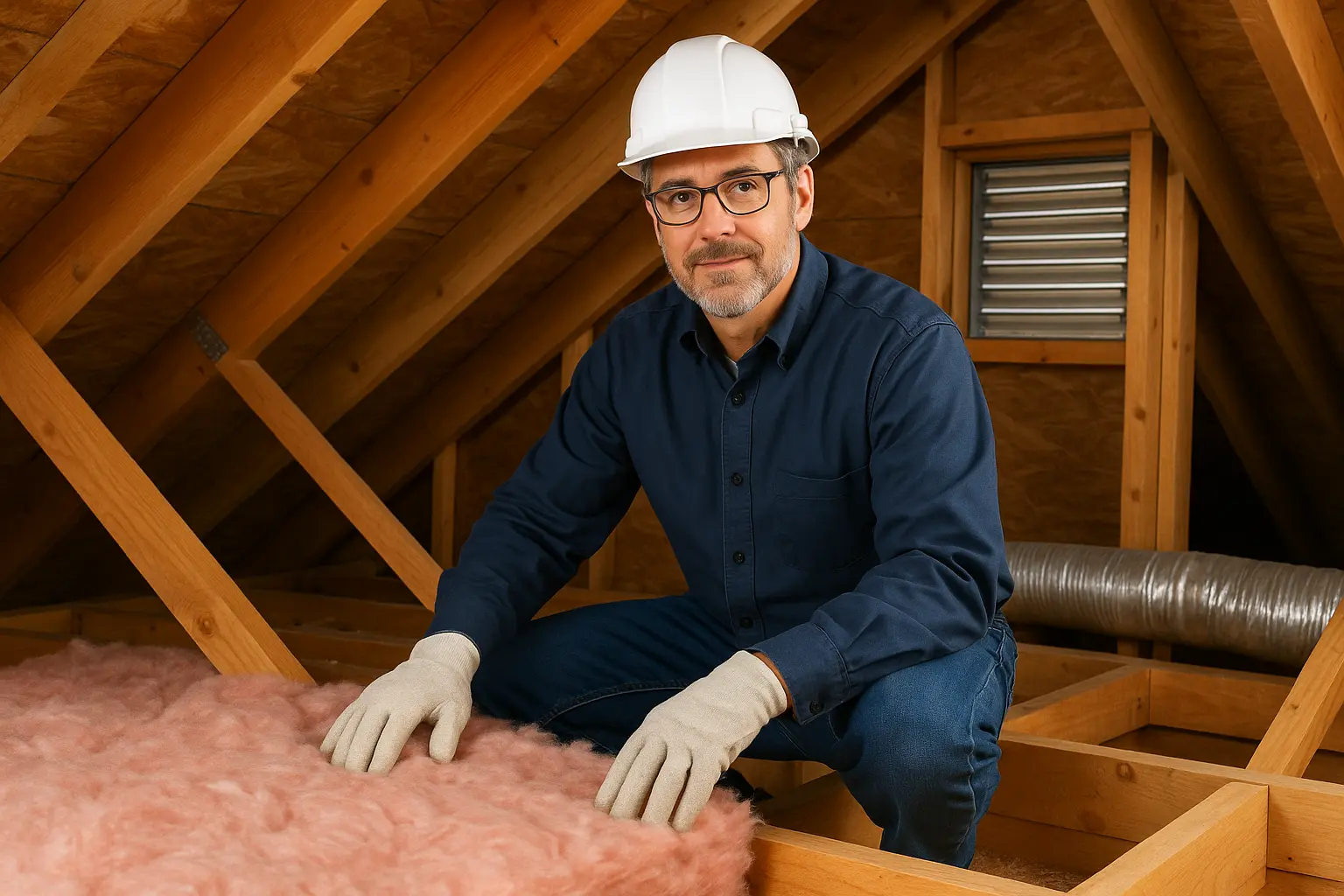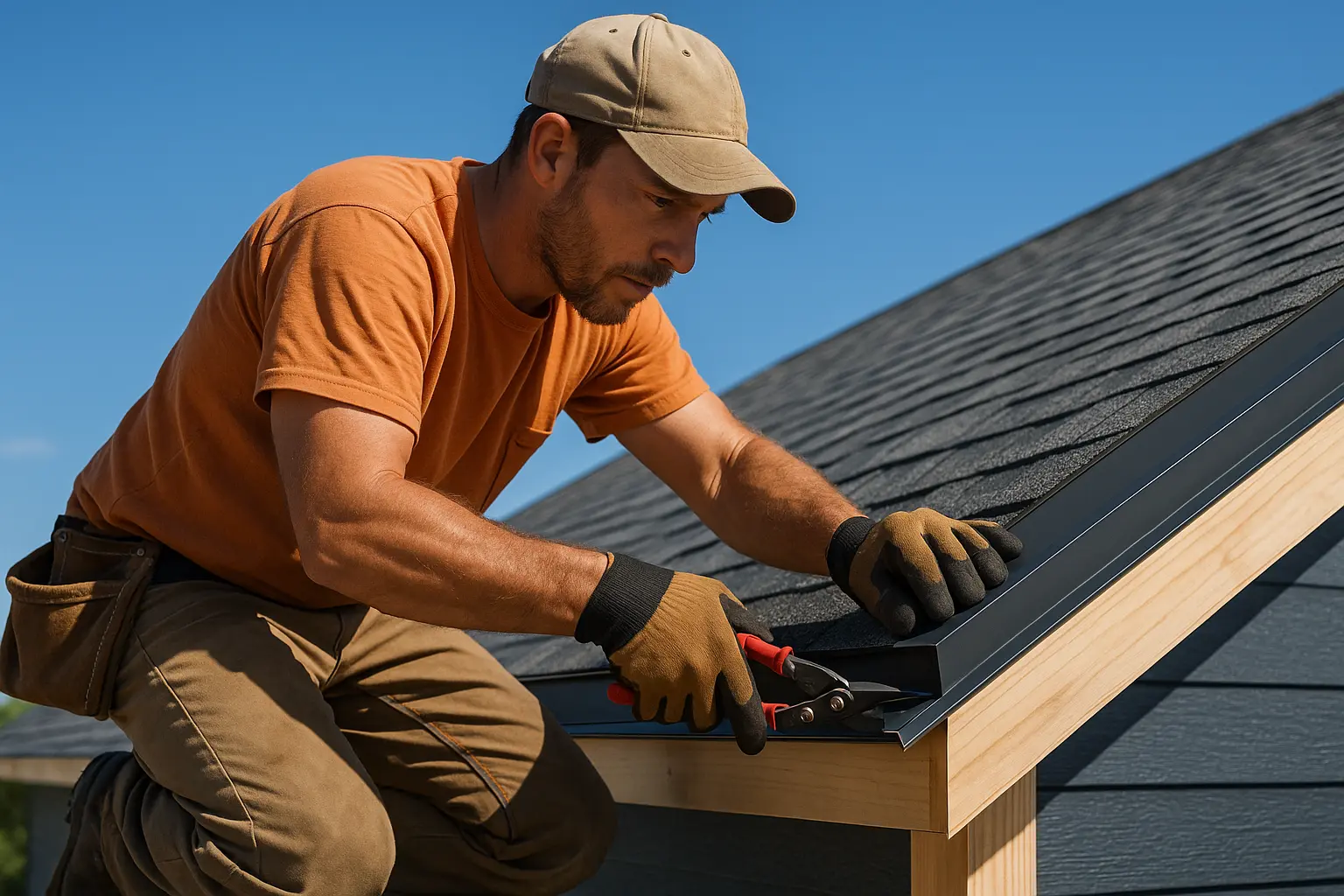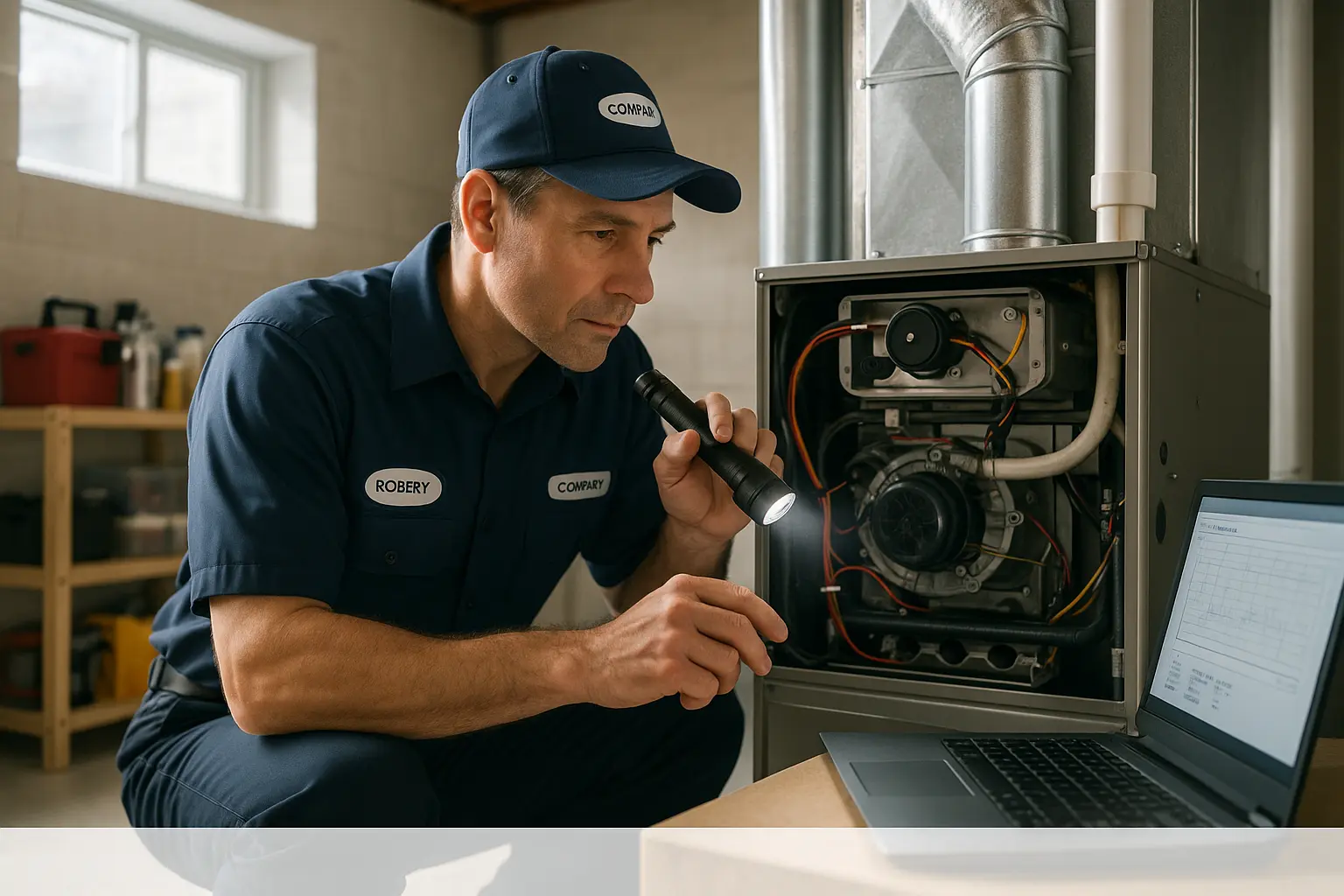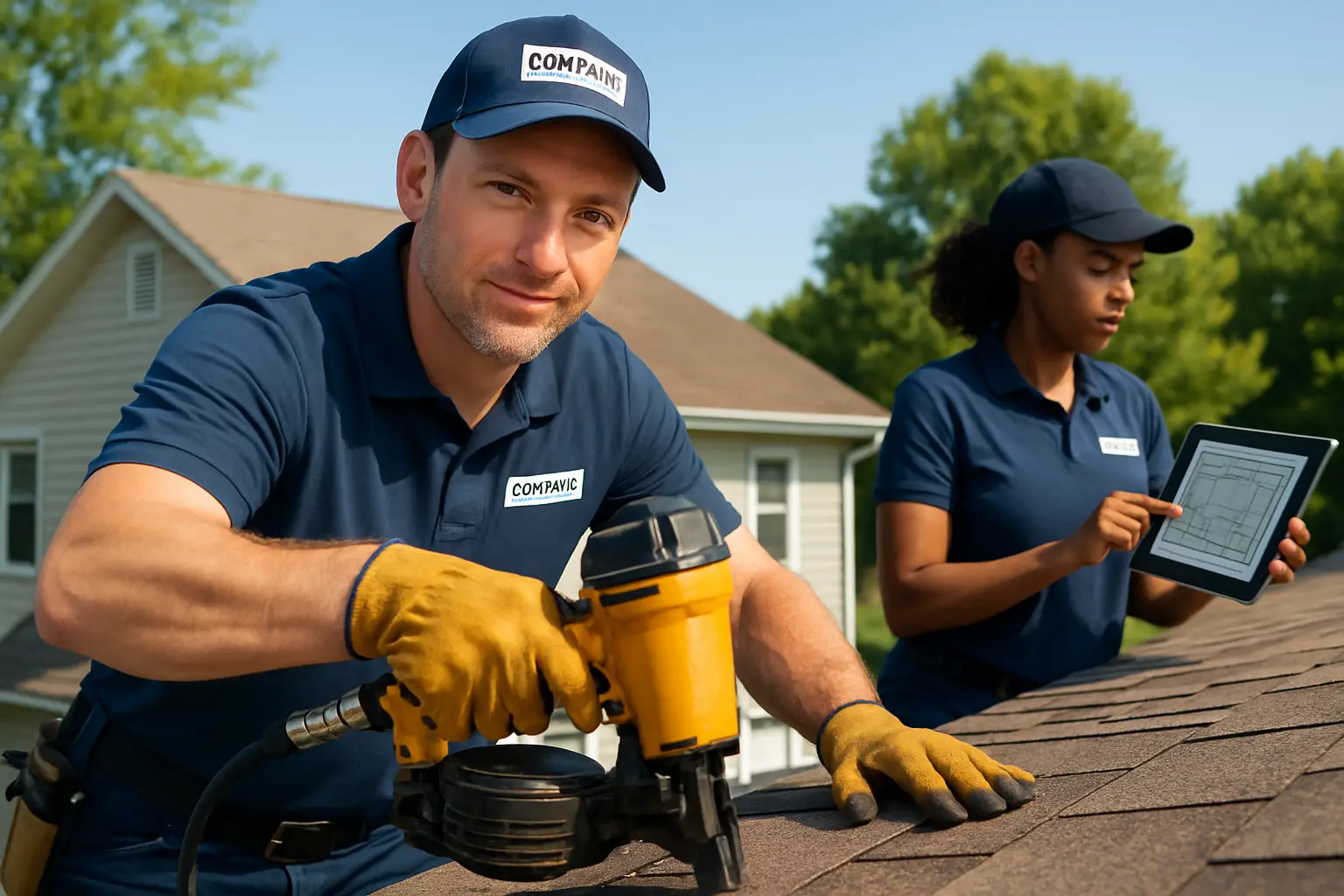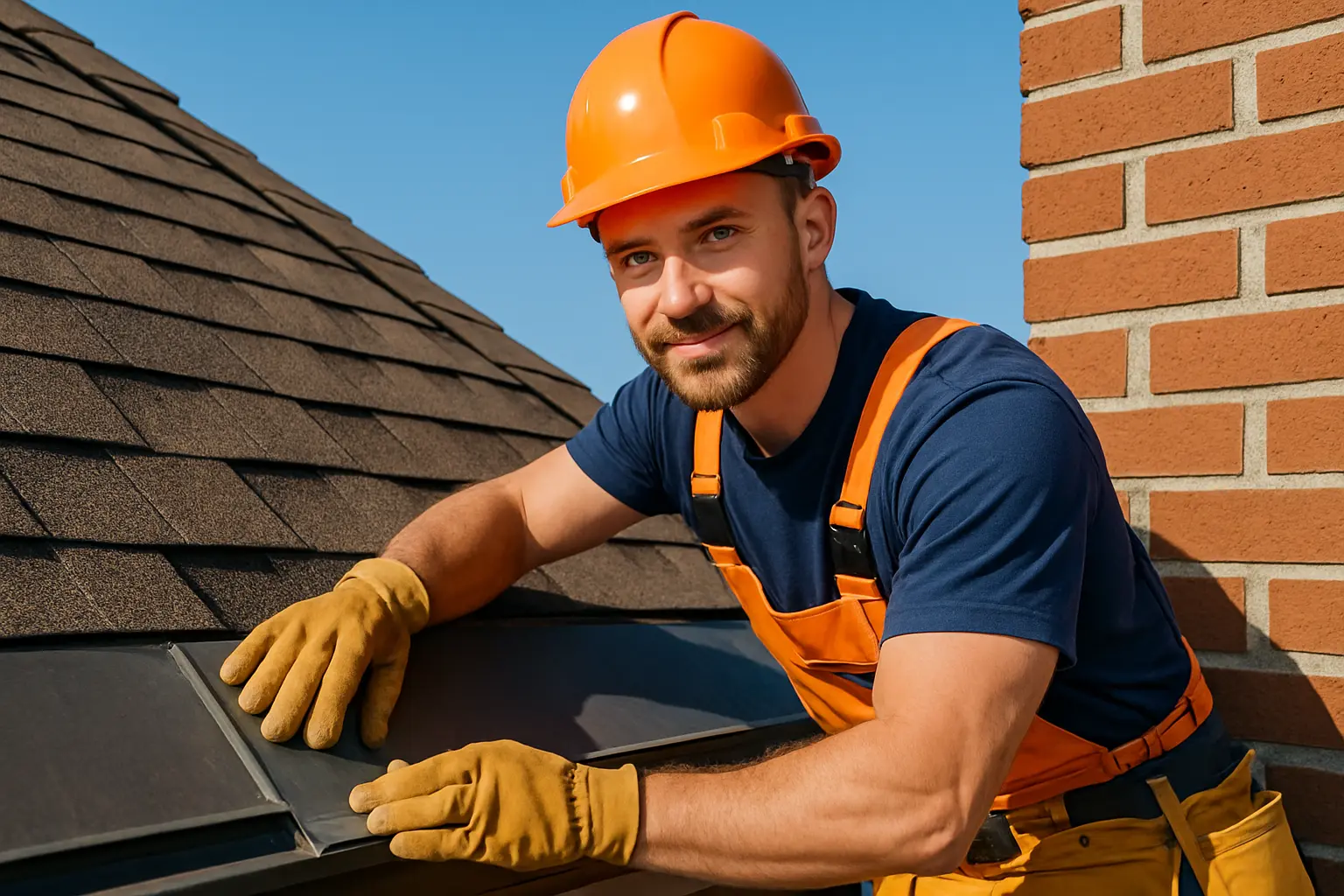Understanding Ice Dams and attic ventilation
What Are Ice Dams?
Ice dams are an unsettling winter occurrence that can mar the look of your home while causing costly damage under the surface. They form when the snow on your roof melts slowly and then refreezes near the eaves, creating a solid barrier. This barrier blocks the normal runoff of water, and over time, the backed-up water seeps under the shingles and into the roof layers. The recurring freeze and thaw process can damage insulation, weaken the structure, and eventually lead to leaks inside your home. In many ways, the presence of these ice barriers is a sign that heat is escaping in unwanted ways. Homeowners learn that managing heat flow, including proper attic ventilation, is critical because a well-regulated roof area reduces the uneven snow melt that triggers the ice dam process.
During winter, the temperature difference between the interior of the house and the frigid air outside causes snow to melt on warmer parts of the roof. When this water hits the colder eave, it refreezes, effectively building a dam layer by layer. Many homeowners have seen water stains and interior damage after such events, and experts recommend paying close attention to factors like attic ventilation, which plays a major role in maintaining an even roof temperature.
Common Causes of Ice Dams
Ice dams result from the mix of warm air escaping from within your home and the biting cold of winter outside. When your attic loses heat due to poor insulation or gaps in air sealing, it warms parts of the roof unevenly. This uneven heating causes snow to melt in some areas, while the lower, colder edges keep the water frozen, eventually forming ice dams. Homeowners often do not realize that the very design of their home contributes to this problem. For example, insufficient insulation paired with limited attic ventilation can lead to dramatic temperature differences over the roof surface, spurring snow melt in the wrong places.
Studies and expert advice stress that a major contributing factor is how air circulates in your roof space. When warm air escapes through a poorly managed attic ventilation system, it heats up the roof unevenly. Regular checks and upgrades to your insulation and ensuring proper airflow—such as through improved attic ventilation—can significantly reduce the need for costly repairs later. Even a small improvement in managing heat can help in reducing the pace of the ice dam formation.
Consequences of Neglecting Ice Dams
Ignoring ice dams can lead to serious repercussions. Water that backs up behind the ice barrier can seep into delicate areas of your home, affecting walls, ceilings, and flooring. Once the water intrudes, it can cause mold to grow within the walls, further eroding insulation and weakening structural components. Many homeowners have faced expensive repairs when minor issues snowball into major structural problems. Even short-term neglect can trigger long-term issues that affect the overall safety and value of your property.
Not only does the physical damage present a high repair cost, but the stress and anxiety that come with unexpected leaks are significant. When homeowners see water stains or notice sagging ceilings, it serves as a warning sign that stain remediation and structural fixes could be on the way. This is where controlling heat loss and enhancing attic ventilation come into play—effective attic ventilation helps to minimize uneven heat distribution, reducing the triggers for snow melt that lead to ice dam formation. Some professionals also refer to improved ice dam insulation techniques, ensuring that water cannot easily seep through even if a small leak develops.
Roof Insulation Techniques
Types of Insulation Material
When battling ice dams, selecting the right insulation is key. The market offers various insulation options, each with benefits and downsides. For example, fiberglass batts remain a popular choice because they are cost-effective and simple to install. Their widespread availability makes them a go-to option for many homeowners who are trying to enhance their roof’s heat retention.
For those mindful of the environment, blown-in cellulose is a top alternative. Composed of recycled paper and treated for fire safety, this insulation not only provides strong thermal protection but also supports energy conservation efforts. Homeowners often pair such insulation options with careful attic ventilation management. When paired with proper air circulation, even traditional insulation materials can perform better in regulating roof temperatures and reducing the risk of unwanted snow melt on the roof.
Spray foam insulation is another effective solution. Its ability to form an airtight seal means that your home’s warmth stays inside while cold air remains at bay. Although this method can be more expensive, it offers high efficiency by reducing heat loss through gaps and lowering energy bills. Many industry assessments indicate that when spray foam insulation is combined with an optimized attic ventilation system, the roof temperature remains more uniform and less prone to prematurely melting snow, a key trigger for forming ice dams.
Proper Insulation Placement
No matter how excellent the insulation, its placement throughout the attic is crucial. Gaps or uneven layers can cause warm spots where extra heat escapes, gradually heating the roof unevenly. Areas around roof edges, chimneys, or other openings are particularly vulnerable, so these need special attention. Correct placement helps create a continuous thermal barrier that aids in reducing the rate of snow melt and subsequent refreezing along the eaves.
Homeowners should consider that insulation works best when it is complemented by a system that supports proper attic ventilation. This combination stops concentrated heat pockets that can drive water to accumulate as ice. Regular energy audits can highlight areas that might benefit from extra care. By focusing on both insulation quality and placement, you can not only prevent water damage but ensure better overall energy efficiency as well.
The Role of attic ventilation
Attic ventilation stands as a critical piece in the ice dam prevention puzzle. A well-planned system of ridge and soffit vents helps balance indoor and outdoor temperatures in the attic. This even distribution of air stops warm pockets from causing the melting and refreezing cycle that leads to ice dam buildup. Effective attic ventilation ensures that any heat escaping from the living areas is properly vented, maintaining a cooler attic space. In fact, a properly operating attic ventilation system can be the difference between a roof that remains intact during winter and one that suffers recurring damage.
Beyond reducing ice dam formation, the right attic ventilation lowers energy bills and boosts the overall efficiency of your home. It is not just insulation that makes a difference but the coordinated handling of airflow. Homeowners who invest time to maintain their attic ventilation systems often notice that the roof stays more uniform in temperature, ultimately reducing the chances of snow melt occurring unevenly.
Proper attic ventilation has its merits in other ways too. For instance, it helps reduce the humidity levels in the attic, which can prevent mold growth and preserve structural integrity. By regularly cleaning and checking vents, you ensure that your system operates at peak performance. In many cases, additional tweaks to your attic ventilation together with enhanced insulation tactics, sometimes even involving targeted ice dam insulation approaches, can greatly improve the safety and longevity of your roof.
Additional Prevention Strategies
Snow Removal Techniques
A hands-on way to keep ice dams at bay is by periodically clearing the snow from your roof. After heavy snowfall, it is sensible to remove excess snow before it has a chance to melt slowly and refreeze. Many homeowners use specially designed roof rakes to gently clear snow without harming the roof’s surface. In steeper roofs or higher areas, it might be wise to hire a professional to avoid any risks.
Regular snow removal does more than prevent weight buildup; it also helps maintain a more consistent temperature throughout the roof. In many cases, removing snow keeps the insulation in the right condition and supports proper attic ventilation. When melting patterns become even, the risk of forming dangerous ice barriers is substantially lowered. Local studies indicate that communities that actively remove snow tend to experience fewer ice dam problems, saving them considerable repair costs later.
Including routine checks for proper attic ventilation along with snow removal means that warm air does not linger near freshly cleared surfaces. This combined approach promotes a balanced roof temperature and minimizes unwanted thaw and refreeze cycles. Homeowners are encouraged to clear snow promptly, particularly when ambient temperatures begin hovering just above freezing.
Heat Cables for Ice Dam Prevention
When other strategies fall short, heat cables offer a supplementary safeguard against ice dam formation. These cables, often called de-icing cables, are installed along the eaves, gutters, and critical roof edges. They produce a controlled amount of heat that discourages ice blocks from forming. This method, when combined with robust insulation and smart attic ventilation, creates an effective barrier against relentless winter weather.
Modern heat cables are energy efficient and designed to operate during extreme cold without consuming excessive power. Their targeted warmth helps keep drainage channels free so that water from melting snow can flow off the roof without obstruction. Many case studies have shown that adding heat cables can be especially beneficial to older homes, where retrofitting improved insulation or effective attic ventilation might be challenging. In these cases, even a modest output from a heat cable system can drastically reduce ice dam risks.
It is recommended to follow manufacturer guidelines when installing heat cables and to have professionals determine the best layout for your roof. Integrated with comprehensive attic ventilation measures, these cables offer an impactful upgrade that helps protect your home from costly water damage and structural repairs.
Winter Maintenance Checklist
Creating a winter maintenance checklist is a smart roadmap for any homeowner aiming to ward off ice dam issues. This checklist should include frequent reviews of your attic insulation, ensuring no shifting or damage has occurred. Look for signs of air leaks, especially around roof edges, vent pipes, or chimneys, and repair them immediately. A well-organized routine that checks the performance of your attic ventilation can catch early issues that might otherwise lead to ice dam insulation problems.
A mid-winter assessment is often useful to observe any shifts in thermal gradients or settling insulation. Many experts suggest running these checks at least twice during the season. Keeping a log of routine maintenance not only helps track progress but also alerts you to areas that might soon need professional attention. This proactive method, which combines regular snow removal, proper insulation, and efficient attic ventilation, drives home the importance of a holistic approach to winter home care.
Conclusion: Effective Ice Dam Prevention
A sturdy roof starts with a smart plan for winter maintenance. By paying close attention to insulation, heat flow, and particularly attic ventilation, homeowners can greatly reduce the likelihood of ice dams. Understanding how water forms on your roof due to uneven snow melt—and knowing ways to combat it using proper attic ventilation—empowers you to protect your home’s structure and value.
Combining top-notch insulation with a well-maintained attic ventilation system, along with strategies like timely snow removal and heat cable installation, creates a strong defense against the pitfalls of winter weather. When every element works together, the damage from water leaks, mold growth, and structural decay is minimized, allowing your home to remain safe and energy efficient.
Homeowners who invest in maintaining effective attic ventilation along with other preventive measures experience not only improved energy savings but also greater peace of mind throughout the cold months. With routine checks and balanced heat management, your roof stays robust against the test of winter. By embracing these methods, you are committing to long-term home care that can withstand harsh climates and safeguard your property for years to come.
In the end, robust attic ventilation, proper ice dam insulation, and active maintenance are not merely short-term fixes—they represent a dedication to ensuring your home remains a haven during winter’s toughest challenges.

